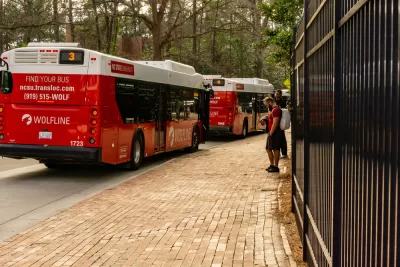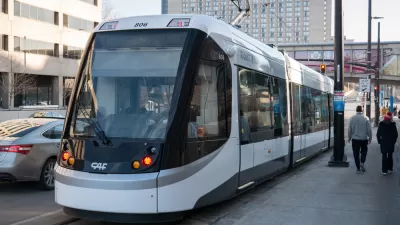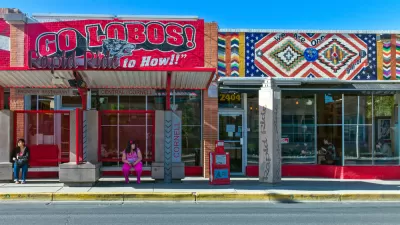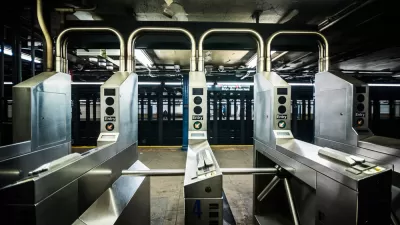The pandemic has provided a proving ground for fare-free transit in cities all over the country. For some cities, it might make fiscal sense for these experiments to be made permanent.

Jake Blumgart reports from Raleigh, North Carolina, where the Covid-19 pandemic has helped advocates for fare-free transit win some political victories for their cause.
The article starts with the example of David Meeker, who before the pandemic estimated that it could take four or five years to pull off a fare-free transit campaign.
"But as COVID-19 swept over the country, the City Council acted quickly to scrap payments for bus riders. That would allow all-door boarding — minimizing interaction with the driver — and it would be a boon for beleaguered essential workers who still had to report to work," explains Blumgart. "In 2021, the City Council has extended the pandemic-era fare-free norm for another budget year. For Meeker and his allies, both in and out of government, this feels like the moment to lock in this policy change."
According to Blumgart, the fare-free proposition is different in a city like Raleigh, where 2 million people rode transit in 2019, than it would be in, for example, New York City or Washington, D.C. "[I]n 2019, the cost of running Raleigh’s bus network was over $31 million with fare revenues only coming to $3.4 million. When the amount spent on collecting that revenue is considered — paying people to collect and move large amounts of physical money — the actual amount is even less," explains Blumgart.
FULL STORY: Raleigh Pushes for Permanent Fare-Free Transit

Maui's Vacation Rental Debate Turns Ugly
Verbal attacks, misinformation campaigns and fistfights plague a high-stakes debate to convert thousands of vacation rentals into long-term housing.

Planetizen Federal Action Tracker
A weekly monitor of how Trump’s orders and actions are impacting planners and planning in America.

San Francisco Suspends Traffic Calming Amidst Record Deaths
Citing “a challenging fiscal landscape,” the city will cease the program on the heels of 42 traffic deaths, including 24 pedestrians.

Defunct Pittsburgh Power Plant to Become Residential Tower
A decommissioned steam heat plant will be redeveloped into almost 100 affordable housing units.

Trump Prompts Restructuring of Transportation Research Board in “Unprecedented Overreach”
The TRB has eliminated more than half of its committees including those focused on climate, equity, and cities.

Amtrak Rolls Out New Orleans to Alabama “Mardi Gras” Train
The new service will operate morning and evening departures between Mobile and New Orleans.
Urban Design for Planners 1: Software Tools
This six-course series explores essential urban design concepts using open source software and equips planners with the tools they need to participate fully in the urban design process.
Planning for Universal Design
Learn the tools for implementing Universal Design in planning regulations.
Heyer Gruel & Associates PA
JM Goldson LLC
Custer County Colorado
City of Camden Redevelopment Agency
City of Astoria
Transportation Research & Education Center (TREC) at Portland State University
Jefferson Parish Government
Camden Redevelopment Agency
City of Claremont





























